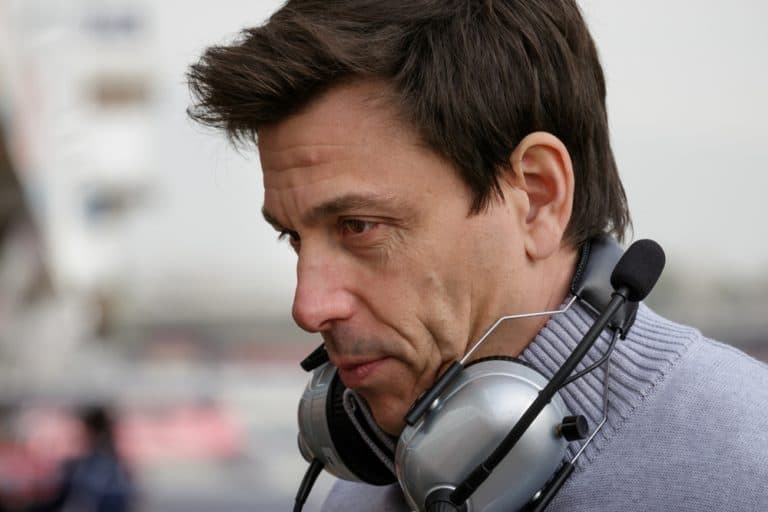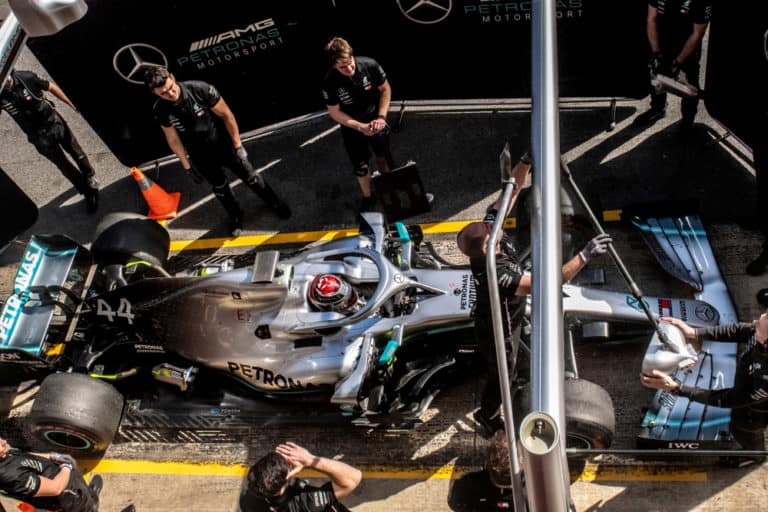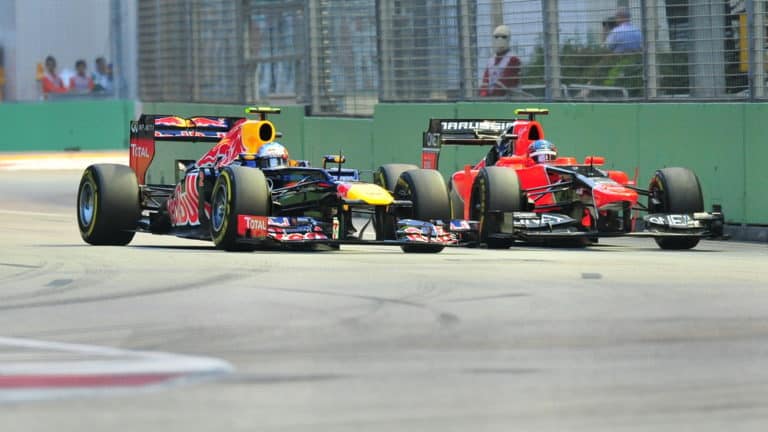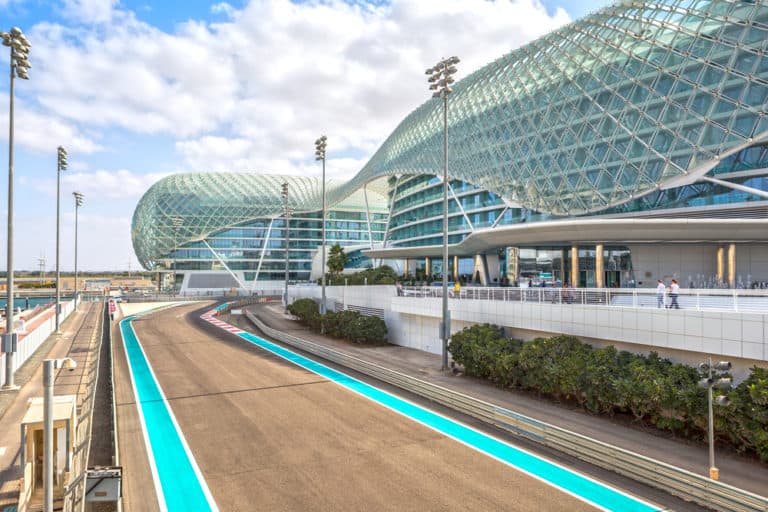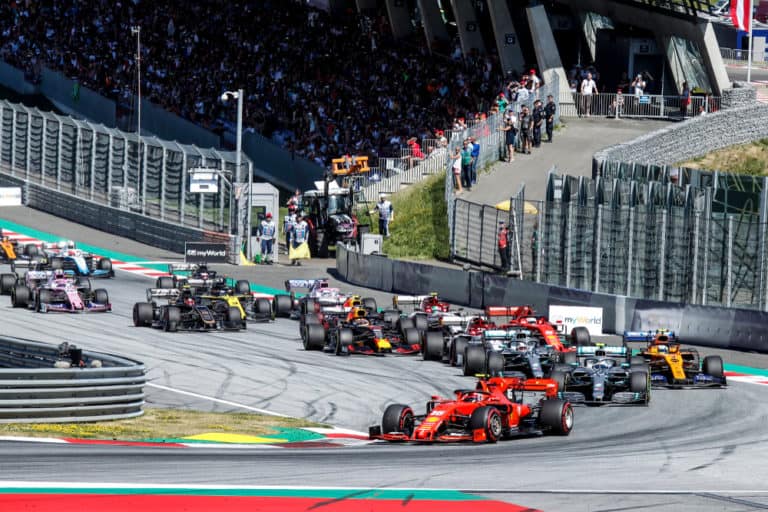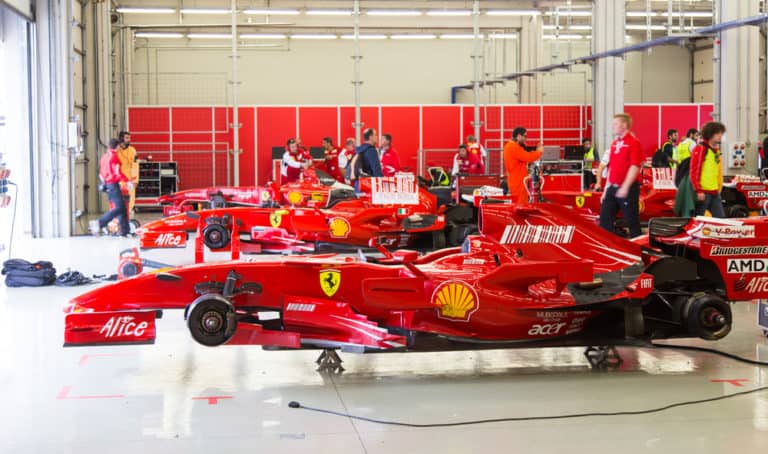Formula 1 is the pinnacle of motor racing, where fans have witnessed remarkable clashes, comebacks, controversies, and extraordinary driving through the years. This article looks at F1’s best moments through the decades.
Some of the best F1 moments are Ayrton Senna’s Monaco GP pole lap in 1988, Nigel Mansell’s GP Championship win at Silverstone in 1992, Niki Lauda’s return at the 1976 Italian GP, Jack Brabham pushed his car over the finish line at the 1959 US GP and Schumacher and Hill’s 1994 controversial collision.
There are so many best F1 moments recorded through racing history it is impossible to name them all, but we will list the ones that we think were most memorable. Let’s find out which of them made it onto our list.
If you’re looking for some F1 merchandise, check out the awesome stuff at the official F1 store here.
Ayrton Senna’s Pole Lap at Monaco’s 1988 Grand Prix
Ayrton Senna keeps the record of six Monaco wins, including five consecutive wins from 1989 to 1993. He landed on the podium eight times from ten starts. Senna’s 1987 championship win was the first time an F1 car won a Grand Prix with an active suspension.
Senna made his debut at Monaco in 1984 when fans generally had no idea who he was. But by 1988, Ayrton Senna was established as one of the greatest names in F1.
Ayrton Senna’s spectacular pole-position lap at the Monaco Grand Prix in 1988 passed into F1 folklore.
Senna was the favorite to win at the 1988 GP when he took the pole position with 1min23s.
At a recorded interview at Silverstone in June 1990, this is what Senna said about that qualifying lap at Monaco.
“In qualifying, we use race tires, not qualifying tires, to do many laps.” “I remember starting, going faster and faster. I was on pole by a few tenths of a second and then by half-a-second, and then a second and then over a second. I was just going faster and faster, and there was a point when I was over two seconds faster than anybody, including my teammate with the same equipment.”
While that fast lap was not exactly a surprise coming from Senna, the fact that he beat champion teammate Alain Prost by 1 second was a spectacular F1 moment.
Ayrton Senna was completely focused, dedicated and derived tremendous satisfaction and emotional experiences from racing. He was addicted to the adrenalin rush from winning, super-fast qualifying laps, and world championships.
Nigel Mansell’s 1992 Grand Prix Championship Win at Silverstone
Nigel Mansell had a particularly successful championship-winning season in 1992. At the ninth round of the 1992 F1 British Grand Prix, we saw Nigel Mansell win the 59-lap race for team Williams-Renault, leading every lap. The British Grand Prix at Silverstone in 1992 was a race apart.
Roads were blocked for miles around Silverstone as fans came in to watch the race. The number of people present was alarming.
There was only one man in the race, Nigel Mansell, who dominated the British Grand Prix from the start of qualifying to the end of the race.
Nigel appeared to get away perfectly from pole position but then encountered some wheelspin, which let Patrese draw level on the run down and take the lead into the corner.
It was Patrese’s lead for only a short while; Mansell pulled up and passed out of the turn. Nigel Mansell’s lead was 3.2s at the end of lap one, and on succeeding laps, 5.9s, 7.9s, 10.1s, 11.8s.
Lap four with full tanks saw a new lap record, and Mansell had reached a 20-second lead with ten laps gone. Mansell out front pulled away with what looked like absurd ease, happy with his 20-second lead. Now and then, he lost a second or two, notably when he lapped Grouillard. However, everyone loses a second lapping Grouillard.
Nigel planned to stop for tires. At the end of the 30th lap, he made a pit stop, taking no risks, approached his pit carefully. The tire change took 12 seconds; he still had eight seconds lead over Patrese at the end of his next lap.
At the front, the race records continued to be set, with Nigel setting new marks. He wasn’t in a race; he led for 59 laps from start to finish.
This was surely one of F1’s best moments when Nigel Mansell won the championship from pole position, led every lap, and secured the fastest lap breaking Jackie Stewart’s 27 race record.
Fans stormed onto the Silverstone circuit and surrounded Mansell’s car elated while three future world champions, Michael Schumacher, Mika Hakkinen, and Damon Hill, stood amazed looking on.
Niki Lauda’s Return to F1 Racing at the 1976 Italian Grand Prix
One of the most memorable moments in F1 history was the return of Niki Lauda, only six weeks after his fiery crash in 1976 at Nürburgring. Niki Lauda’s courageous return to F1 racing at Monza is one of the best F1 moments ever documented.
In reality, Niki Lauda should never have been racing at Monza in September 1976; he crashed forty-two days earlier and had to be dragged from the burning Ferrari. Guy Edwards, Arturo Merzario, Brett Lunger, and Harald Ertl performed Lauda’s heroic rescue.
Lauda’s injuries were so severe that he received last rites and was not expected to survive. Severe facial burns and flame inhalation almost cost him his life. By Lauda’s admission, he began to fight back to life when he heard the priest praying and giving him his last rites.
Niki Lauda’s faced many problems at Monza when he returned. Enzo Ferrari never expected the 1975 world champion to return to racing and decided to employ Carlos Reutemann as Clay Regazzoni’s new racing partner.
Lauda was firm and calm and said he had a contract and was the one who would be returning to Monza to defend his title. Instead of admiring Lauda’s courage, Enzo Ferrari was not impressed.
Enzo’s reservations about Lauda’s emotional state were justified on the first day of race practice. The track was wet, and with Lauda’s facial burns still not healed completely, Lauda got aggravated every time he had to remove his helmet. He felt fragile psychologically, and it showed.
He got irritated and angry when told to take a second medical. He felt that being there was enough testament to his fitness.
He admitted when he felt his car sliding beneath him became scared. Lauda was a man who always drove with his head rather than with his heart said he was feeling like an airline pilot that reacts to every air pocket during flight, and that was not a comfortable feeling to feel when racing.
Lauda struggled that night but regrouped after looking at every aspect of his psyche. After processing everything, Niki Lauda returned, and a different man sat in the Ferrari’s cockpit the next day.
At the beginning of the race, Lauda took things easy, letting Regazzoni and Reutemann pass. But as Ronnie Peterson raced ahead of Laffite and Regazzoni, Lauda passed Reutemann and the two Tyrrells to take fourth place. The remarkable Austrian who almost died was back.
Jack Brabham Pushed His Car Across the Finish Line at the 1959 United States Grand Prix
One of the best memorable F1 moments was at the US Grand Prix at Sebring in 1959, when Jack Brabham was on his way to claim the championship but had to push his car across the finish line when it ran out of petrol.
On 12 December 1959, driver Jack Brabham only needed to finish the championship race to win. As misfortune would have it, he ran out of petrol on the final lap. He decided to push his CooperT51 300 meters to finish without giving up.
Three other cars passed him while pushing his car to the finish line, and he finished fourth. Jack Brabham became the first Australian to win an F1 World Championship. Brabham won two more world championships after that in 1960 and 1966.
Jack Brabham became the biggest manufacturer of racing cars globally and was named Australian of the Year.
Michael Schumacher and Damon Hill’s 1994 Australian GP Controversial Collision
The 1994 racing season was covered in tragedy and controversy, with Ayrton Senna’s death in the San Marino Grand Prix and Michael Schumacher’s two-race ban and exclusion from the British Grand Prix.
Damon Hill reduced the gap between him and championship leader Michael Schumacher to one point. After Ayrton Senna’s death, team Williams-Renault teamed Damon Hill with David Coulthard and four other times with Nigel Mansell.
During the Australian GP, Mansell claimed pole position, with Michael Schumacher’s Benetton-Ford second and Damon Hill third.
The championship title would either be won by Schumacher or Hill, whichever one finished first.
Nigel Mansell powerful revs at the start of the race sent his Williams skidding sideways. Michael Schumacher and Damon Hill both passed Nigel Mansell.
Michael Schumacher led, and Damon Hill was in hot in pursuit when the race settled down. When they reached the 30th-lap, Schumacher’s advantage was two seconds.
On the 36th lap, Michael Schumacher hit the wall at the East Terrace turn, where he quickly continued. Damon Hill tried to pass Schumacher’s damaged Benetton at the next corner.
Michael Schumacher turned in on Hill’s car, which launched him up onto two wheels and into the barriers, forcing Hill to retire in the pits with damage on the car’s left-front suspension.
Michael Schumacher was the champion, and Nigel Mansell ended his Williams career with victory after passing Gerhard Berger’s Ferrari.
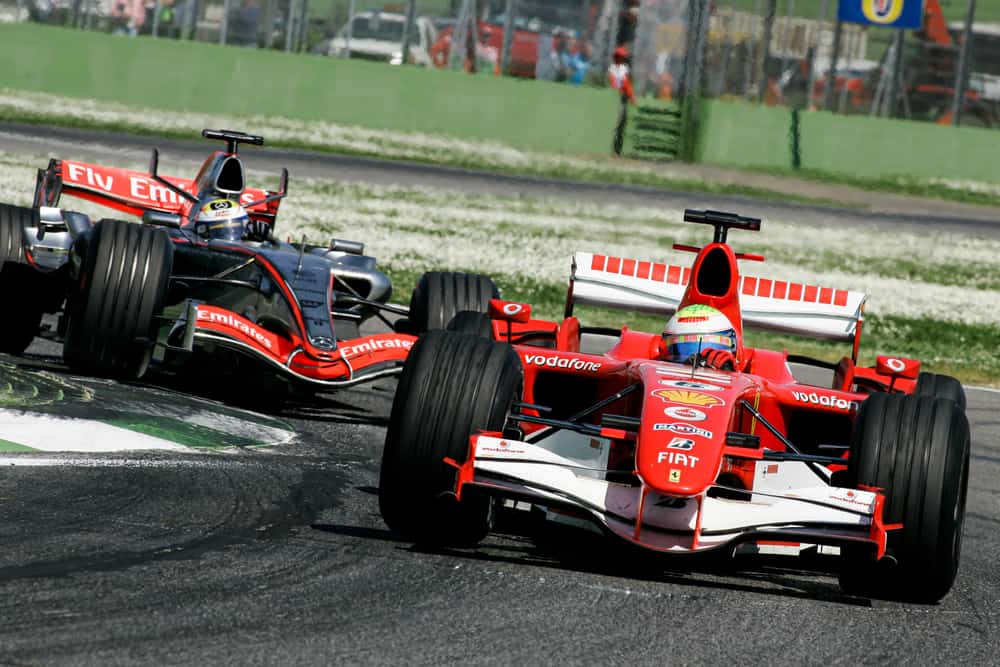
Lewis Hamilton Won British Grand Prix in 2008
Lewis Hamilton earned an amazing record for F1 racing and championship wins. The Russian Grand Prix in 2021 marked the 100th time for Hamilton that he took the checkered flag.
That record elevated Lewis Hamilton to seven World Drivers Championships and tied him with legend Michael Schumacher.
Lewis Hamilton won his first British Grand Prix in 2008; that day, the gap between second place and Hamiton was 68 seconds when the race ended.
Despite his ability to win races, Lewis Hamilton said his only desire was to win two races at least once in his life: the British Grand Prix and Monaco Grand Prix.
While Hamilton achieved the wins in his second year and both victories were spectacular, the victory at the British Grand Prix truly awakened everyone to the genius of Lewis Hamilton.
The 2008 British Grand Prix was a wet race. Heikki Kovalainen, Hamilton’s new McLaren-Mercedes teammate, found himself in a hot spot when Hamilton gained a position from fourth to second place at the start of the race. Kovalainen, under pressure, kept the Hamilton behind him until the 5th lap.
Hamilton lined Kovalainen up down the Hangar Straight and passed him at Stowe right-hander. Hamilton went unchallenged the next 55 laps as he raced through the treacherous wet conditions. His gap grew with each passing lap without mistakes, as much as six seconds per lap.
At the end of the 60-lap race, Hamilton crossed the finish line 68 seconds ahead of Nick Heidfeld and 14 seconds ahead of Rubens Barrichello. Teammate Kovalainen made it to fifth place.
On 6 July 2008, Hamilton lapped every driver who completed the race. Lewis Hamilton was the F1 Drivers Champion at the end of the 2008 season.
Ayrton Senna and Alain Prost’s Showdown at the Suzuka Japanese Grand Prix 1989
Senna needed to beat Prost at the Japanese Grand Prix to remain in the title position at the Adelaide Australian Grand Prix in 1989. The most dramatic moment in F1 racing was when two of the biggest rivals, McLaren teammates Alain Prost and Ayrton Senna, collided at the Japanese Grand Prix spectacularly.
Ayrton Senna outraced his biggest rival Alain Prost by 1.730 seconds to earn the pole position. Alain Prost went for a lower-downforce set-up for the race and made a good start in the beginning, while Ayrton Senna held off Gerhard Berger’s Ferrari for second place.
Alain Prost was four seconds ahead of Senna when he decided to make a pitstop. Ayrton Senna made a pitstop two laps later. His pitstop took two seconds longer.
At the end of the 40th lap, Senna gained to half a second behind Prost, who charged and stretched the gap. Ayrton Senna responded once more, and on the 47th lap, he made his move.
The lower downforce set-up gave Alain Prost a straight-line-speed advantage, and Ayrton Senna’s only chance of passing Prost was to be slow on the brakes into the chicane.
Ayrton Senna took his chance and went on the inside and tried to pass, but Alain Prost tried to close him in. The cars touched and locked together, forcing the two McLarens to a stop in a tangle in front of the escape road.
After the two cars interlocked, Alain Prost climbed out and walked away when his car was clearly stalled. Ayrton Senna motioned for a push start from the crew and raced down the escape road to join the race but did not take the chicane.
Ayrton Senna came in for a pitstop on the next lap to replace his damaged front wing. Alessandro Nannini took the lead, but Senna passed Alessandro at the chicane with two laps remaining. Senna took the victory but was later excluded for bypassing the chicane when he drove down the escape road. The McLaren team appealed the decision but failed. Alain Prost was crowned champion and left McLaren to join Ferrari after that.
Jenson Button’s Eventful Canadian Grand Prix Victory 2011
Jenson Button took the victory flag 15 times in his F1 racing career, but the 2011 Canadian Grand Prix is certainly his most spectacular and eventful win. The 2011 Canadian Grand Prix is one of F1’s most memorable races with the chaotic events that marked it.
Jenson Button’s victory after a last-lap pass on Sebastian Vettel was Jenson’s last-to-victory in wet-weather undoubtedly best win ever.
The 2011 Canadian Grand Prix is the longest F1 race at four hours, four minutes, and 39 seconds on record.
The chaos-filled 2011 Canadian Grand Prix is a regular mention in any F1 list when we remember the best F1 moments.
Jenson Button was in last place, fighting back from six pitstops, a collision with his teammate Lewis Hamilton, and with 30 laps to go, before he started fighting back to claim a spectacular victory at the Circuit Gilles Villeneuve.
The first 40 laps of the race took three hours and twenty minutes, with just 12 laps of the green flag. Severe rainfall, in the beginning, meant the race started behind a safety car. The red flag was raised on the 25th lap with two more safety car appearances, resulting in a two-hour delay.
Hamilton and Button clashed on the 7th lap after Schumacher forced Hamilton, who was gaining, wide at the hairpin on the previous lap.
Lewis Hamilton entered Jenson Button’s slipstream as they raced down the main straight, following his teammate as he drifted toward the pit wall. Lewis Hamilton tried to pass, only for Jenson Button to drive into him when he didn’t see his teammate, causing a collision.
The car went sideways, and with Lewis on his left, they connected where Hamilton crashed into the wall, and Buton followed.
The collision forced Button to the pits after limping around the lap with a puncture; he switched to intermediate tires after that.
The safety car came out and allowed the gap to be reduced while Hamilton’s car stopped and recovered, which dropped Button 30-seconds behind leader Sebastian Vettel.
Button used the stoppage to quickly look for his teammate Lewis Hamilton to apologize for causing him the race.
Button said he went to apologize for the crash, and Hamilton told him he understood Button didn’t see him and didn’t blame Button. Jenson was relieved because he could then focus on the race, ready for the restart.
Soon after the restart, another incident followed. After the fourth pitstop to change from wet tires back to intermediate tires just one lap after the race resumed, Jenson Button clashed with Fernando Alonso at the first chicane.
He drove down the inside of Fernando into the 3rd turn, and both tried to get through the corner side-by-side, where their wheels touched, spinning around getting stuck on the curb. With another puncture and front wing, damage Button had to get to the pits again.
This placed Button dead last, with one minute and 40 seconds behind Sebastian Vettel. Fortunately for Button, the gap was reduced again by the safety car called to recover Alonso’s damaged car.
When the rain stopped, and the track began to dry, Button began gaining positions. Button made his way up the order and, with help from other drivers who had to pit after still using full wet tires.
Within 10 laps of the race restarting, Jenson Button had already made his way back to tenth place.
Following Heidfeld’s crash, debris was strewn across the track, and the safety car came out again. That left Button fourth on the road, and after passing the Virgin car, Button focused on Webber and Schumacher in the front.
Webber made a mistake with seven laps to go, giving Button a run coming out of the last chicane.
Jenson Button raced through and kept his foot down hard to take third, and on the next lap, he passed Michael Schumacher. Jenson Button had five laps to catch up to and pass Sebastian Vettel if he wanted to win.
Jenson Button continued to gain on Vettel as the laps passed. When Vettel turned in on the 6th turn, his car skidded to the outside of the corner, the back jutting out. This gap let Button pass Vettel and move into the lead with half a lap remaining to the finish line.
Watching the Red Bull going sideways, Button drove past into the lead. During the 70-lap race, Jenson Button led half a lap-only and crossed the finish line to win his sensational last-to-victory win.
The clashes with Hamilton and Alonso were mistakes made by Button, which meant the race could hardly be classed as a clean race.
The Canadian 2011 Grand Prix brought out the most remembered characteristics from Jenson Button’s F1 racing career.
The Canadian GP win was Button’s first of the season and placed him into second place in the World Drivers’ Championship with sixty points behind leader Vettel.
Conclusion
There are far too many controversial and spectacular F1 moments to name them all. This list includes eight of the most memorable moments. We saved the most dramatic F1 moment for last, with Jason Button taking our top spot in our list of best F1 moments. The controversial race was filled with chaos and drama, but Button managed to end the race in victory.
Sources
- https://www.topgear.com/car-news/formula-one/here-are-10-formula-1s-best-ever-moments
- https://en.wikipedia.org/wiki/1992_British_Grand_Prix#:~:text=It%20was%20the%20ninth%20round,fastest%20lap%20of%20the%20race.
- https://www.ayrtonsenna.com.br/en/piloto/formula-1/temporada-1988/grande-premio-de-monaco-1988/
- https://www.formula1.com/en/latest/article.f1s-best-drives-7-laudas-barely-believable-monza-comeback.2unsQDzPIUws9wefP9N27Y.html
- https://www.mclaren.com/racing/2018/legendary-laps/senna-1988-quali-lap-2119884/
- https://www.motorsport.com/f1/news/f1-title-most-controversial-deciders/6868140/

